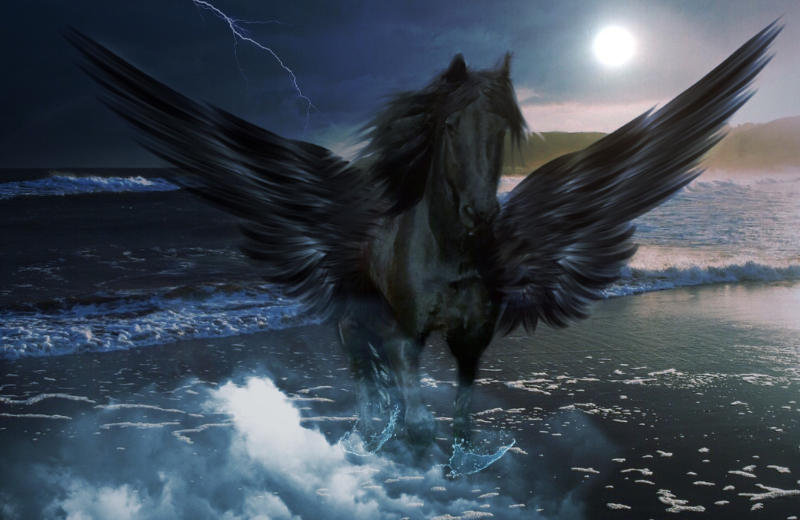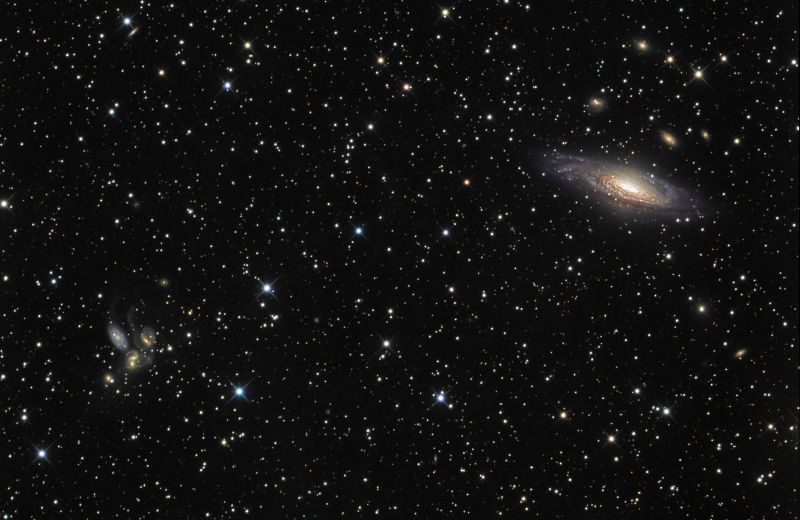One of the most fascinating constellations visible from Earth is Pegasus, a constellation steeped in myth and rich with intriguing celestial bodies. This guide shares the history, stars, and significance of this constellation, while answering some key questions about why Pegasus is so special.
Jump to:
Recommended for you!
Best SellersWhat is the Pegasus Constellation?
The Pegasus constellation, named after the mythical winged horse from Greek mythology, is one of the most recognisable constellations in the night sky. Located in the northern hemisphere, it covers a vast area, making it one of the largest constellations. Pegasus is particularly known for its "Square of Pegasus," a distinctive asterism formed by four bright stars that make locating it relatively simple.
The Pegasus constellation lies within the family of constellations known as the Perseus group. It’s an ancient constellation, catalogued by the Greek astronomer Ptolemy in the 2nd century.
What Does Pegasus Look Like?

Pegasus is famous for its square formation. The four stars that form the Square of Pegasus—Markab, Scheat, Algenib, and Alpheratz—are what most people use to identify it. While the constellation depicts a horse, the square doesn't quite give you the whole picture. In fact, only the front half of the horse is visible, which can be a little surprising for those expecting to see the full mythical steed.
If you're observing the constellation, you may also notice that Pegasus appears upside down in the sky. This is due to the position of the Earth as it orbits around the Sun. So, don’t be surprised when you see Pegasus galloping upside down!
How Far is the Pegasus Constellation from Earth?
While it’s difficult to measure how far an entire constellation is from Earth, individual stars within Pegasus have distances that can be measured. For example, Markab, one of the stars forming the square, is around 133 light-years away from Earth. Algenib, another star in the asterism, is about 390 light-years away. The varying distances of these stars help give depth to the constellation, although from Earth, they appear as though they are on the same celestial plane.
The Pegasus Constellation Myth

The story of Pegasus originates from Greek mythology. Pegasus was the winged horse born from the blood of Medusa when the hero Perseus slew her. Later, Pegasus became the trusted steed of the hero Bellerophon, who rode him in his quest to defeat the monstrous Chimera. Pegasus eventually found his place in the stars after Zeus transformed him into a constellation.
This myth adds to the constellation’s allure, with the celestial horse symbolising swiftness, strength, and the power to ascend to great heights. Pegasus remains a symbol of inspiration and creativity.
Pegasus’ Stars
The Pegasus constellation contains several notable stars. Apart from the famous Square of Pegasus, other stars within the constellation have their own stories:
- Enif – The brightest star in Pegasus, located at the horse's nose. Enif is an orange supergiant, around 690 light-years from Earth.
- Markab – A star that forms one corner of the square, classified as a blue-white subgiant. Markab is approximately 133 light-years away.
- Scheat – Another corner of the square, Scheat is a red giant, known for its occasional fluctuations in brightness.
- Algenib – A star on the southern side of the square, this blue-white giant star is around 390 light-years away from Earth.
Nebulae in the Pegasus Constellation

While the Pegasus constellation is best known for its stars, it also houses some fascinating deep-sky objects. For example, the Pegasus Dwarf Galaxy lies within the constellation’s bounds. This galaxy is a small, irregular galaxy that belongs to the Local Group, a collection of galaxies that includes our own Milky Way.
There’s also NGC 7331, a spiral galaxy often called a twin of the Milky Way due to its similar structure. Located about 40 million light-years from Earth, this galaxy can be seen in the same region as Pegasus, adding even more to its allure for deep-sky observers.
Finding Pegasus in the Sky
For the best chance to spot the Pegasus constellation, aim to stargaze during the autumn months, especially from September to November. This is when Pegasus is at its highest point in the night sky, making it easier to find and observe.
Locating Pegasus
Start by looking for the "Square of Pegasus," a distinctive asterism made up of four bright stars: Markab, Scheat, Algenib, and Alpheratz. This square shape is one of the most recognisable patterns in the sky and serves as the gateway to finding the rest of the constellation. Once you've identified the square, you can trace the rest of Pegasus' stars.
If you're in the northern hemisphere, Pegasus will appear high in the sky during the autumn, making it ideal for viewing. You’ll also find Pegasus positioned near the Andromeda constellation, with Alpheratz being a shared star between the two.
To improve your chances of locating Pegasus, especially in areas with light pollution or less visible skies, you might want to use a star map or a stargazing app. These tools can guide you to the exact position of the constellation and help you better appreciate its unique layout.
Viewing Pegasus with Binoculars or a Telescope
- With Binoculars: Although you can spot the Square of Pegasus with the naked eye, binoculars will help you see some of the fainter stars and outline the full shape of the constellation more clearly.
- With a Telescope: A telescope can bring into focus some of the more remarkable stars and deep-sky objects in Pegasus, including galaxies like NGC 7331, which lies in the same region of the sky.
The Best Viewing Conditions
For the best viewing experience, try to find a location with little to no light pollution and observe on a clear, dark night, ideally when the Moon is not visible. These conditions will enhance your ability to see not just the prominent stars in Pegasus but also some of its more subtle celestial features.
Recommended for you!
Best SellersFun Facts About Pegasus
- The name "Pegasus" comes from the Greek word "Pegasos," meaning "strong."
- The Square of Pegasus is one of the largest asterisms in the sky, making it a useful guide for finding other constellations.
- Pegasus is often associated with creativity and inspiration in literature and art due to its mythological roots.
- Despite its upside-down appearance, Pegasus is still easily recognisable thanks to its square formation.
- Pegasus contains several exoplanets, some of which have been discovered orbiting stars within the constellation, adding to its scientific significance.
Study Astronomy for £29
If you’ve enjoyed this guide to the Pegasus constellation and want to learn more about the stars, nebulae, and other wonders of the universe, consider studying astronomy in greater depth. Centre of Excellence offers an Astronomy Diploma Course that provides a fascinating introduction to stargazing, celestial objects, and the science behind the night sky. The course is currently available for just £29!













